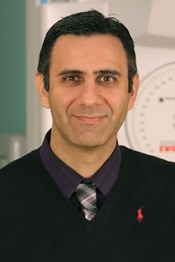Analysis of Time Dependency of NTCP Modeling and Dose-Volume Correlations of Patient Reported Xerostomia After HPV Associated Oropharyngeal Cancer
P Mavroidis1*, A Tzikas2, E Lavdas2, R Amdur3, W Mendenhall3, N Sheets1, R Green1, L Marks1, S Das1, B Chera1, (1) University of North Carolina, Chapel Hill, NC, (2) University Of West Attica, Department Of Biomedical Sciences, Athens, Greece, (3) University of Florida Hospitals, Gainesville, FL
Presentations
MO-IePD-TRACK 5-4 (Monday, 7/26/2021) 3:00 PM - 3:30 PM [Eastern Time (GMT-4)]
Purpose: This study aims at analyzing the time dependency of dose-volume correlations with patient reported (PRO) xerostomia after radiotherapy and the corresponding normal tissue complication probability (NTCP) modeling.
Methods: 151 patients with favorable risk, HPV-associated oropharyngeal squamous cell carcinoma were treated with radiotherapy. A dose of 60Gy delivered with IMRT was prescribed to the patients. Xerostomia was assessed based on the PRO-CTCAE score and it was defined as a ≥2 point increase from baseline at 6, 12, 18 and 24 months post-RT. The dose volume histograms (DVH) of the contralateral parotid and contralateral glands (parotid and submandibular glands combined) of each patient were exported and correlated with the follow-up data of xerostomia. The clinical data was fitted by the Relative Seriality (RS) NTCP model.
Results: Xerostomia was observed in 59%, 38%, 29% and 31% of the patients at 6, 12, 18 and 24 months, respectively. The AUC values of the correlations ranged between 0.59-0.66. For the contralateral parotid, the values of the D50, γ and s parameters of the RS model were 24.4Gy, 0.46 and 0.01 at 12 months and 31.5Gy, 0.34 and 0.01 at 24 months post-RT. Statistically significant Odds Ratios (ORs) of 3.1 (1.2-7.9) and 2.9 (1.3-6.6) were found for the contralateral parotid for biological doses < 23Gy and 21Gy at 12 and 24 months post-RT, respectively. Similarly, for the combined contralateral glands ORs of 2.3 (1.1-5.0) and 2.8 (1.1-6.8) were found for biological doses < 27Gy and 31Gy at 12 and 24 months post-RT, respectively.
Conclusion: The dose-response curve of PRO xerostomia at 6, 12, 18 and 24 months post-RT could be determined by the RS NTCP model. Keeping the biological dose to the contralateral parotid < 21Gy or to the combined contralateral glands < 27Gy was found to significantly reduce the risk for patient reported xerostomia.
ePosters
Keywords
NTCP, Dose Response, Radiation Effects
Taxonomy
TH- Response Assessment: Modeling: other than machine learning
Contact Email



